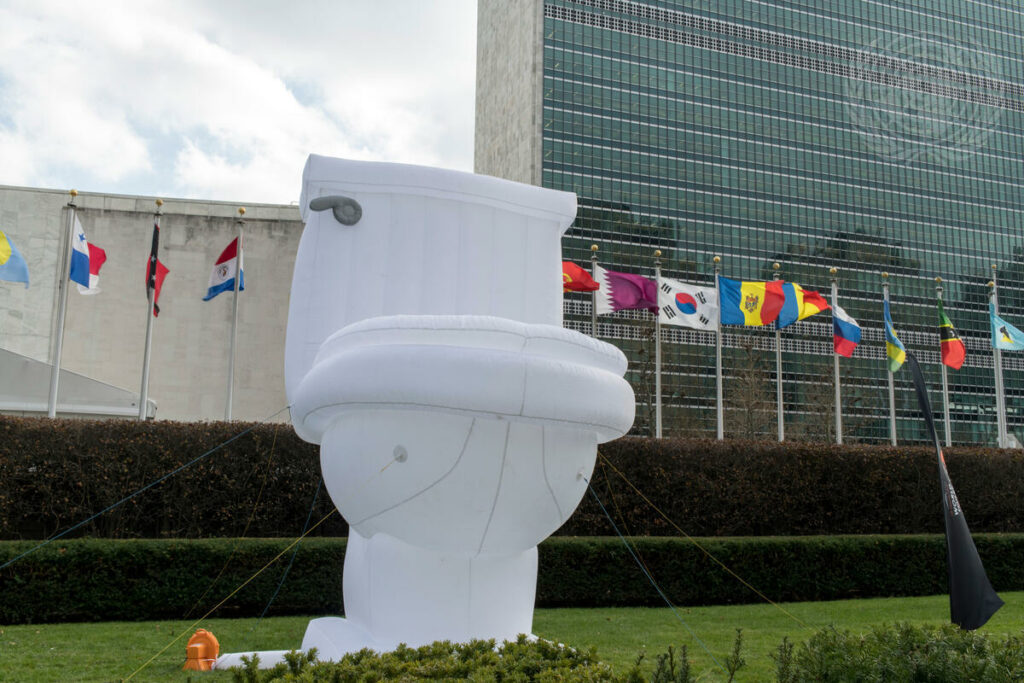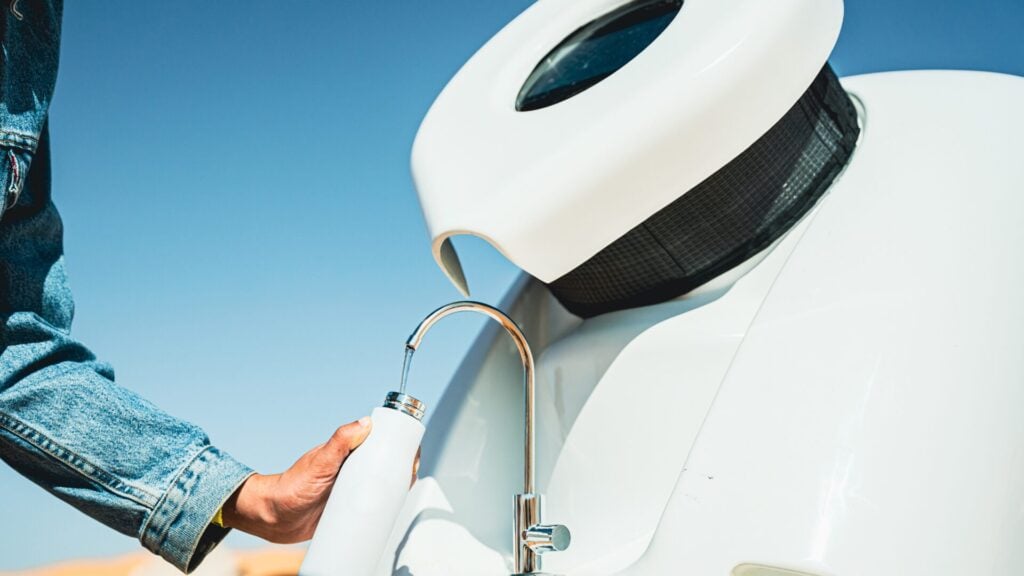She’s the world’s expert on chimpanzees after studying them in the wild for 60 years who, as an iconic female conservationist, has even had a Jane Goodall eco-Barbie fashioned in her image.
But as 88-year-old primatologist, humanitarian, scientist and activist Jane Goodall launches her Roots & Shoots programme education programme here in the UAE to encourage children to help people, animals and the environment, she’s also inspiring us all to have hope for the future.
Raised in England in a family without much money, Jane believed she’d be stuck in an office after entering secretarial school.
Luckily, she was invited to stay with a former schoolfriend whose family had bought a farm in Africa and with a little ‘right time, right place’ luck on her side, ended up following her dream to study chimps at Gombe Stream National Park in Tanzania, where she discovered their human-like behaviour including the use of tools.
It was a controversial major break-through as it challenged long-held and deep-set ideas on what is it to be human as previously scientists accepted that trait as a definition of humanity.
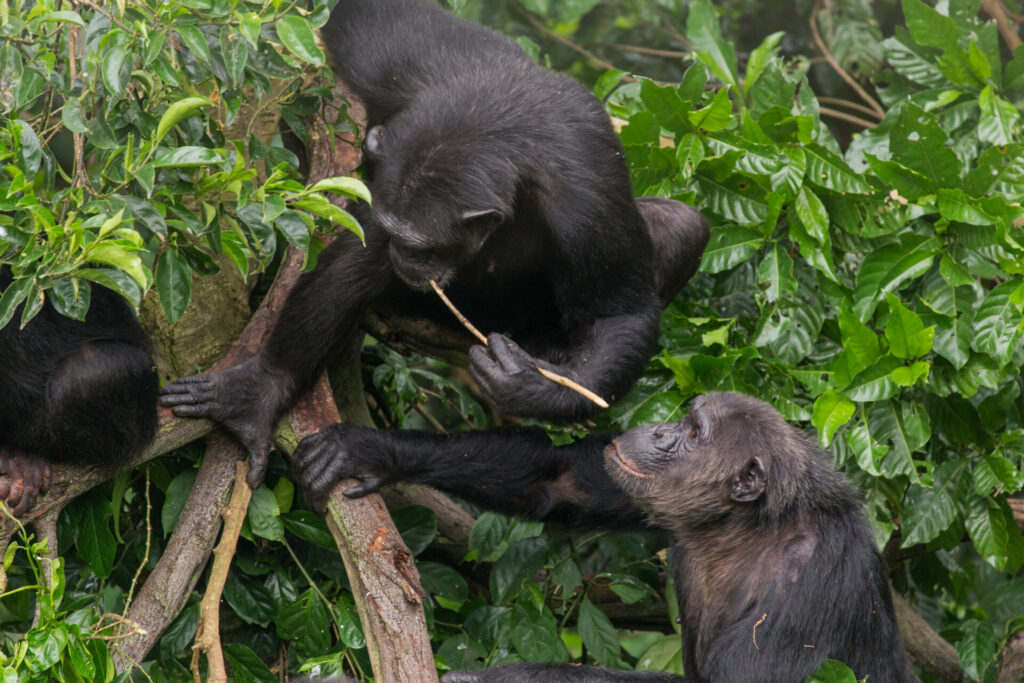
Now on the board of the Nonhuman Rights Project to give animals the right not to be imprisoned or experimented upon, the UN Messenger of Peace is also an honoury member of the World Future Council, which works to pass on a ‘healthy and sustainable’ planet with ‘just and peaceful’ societies to future generations.
Here, we choose our top 12 quotes from the anthropologist’s talk at Sustainable City’s SEE Institute where she was addressing children from her Roots and Shoots programme including Fairgreen International .
Jane Goodall On Her Dream To Go To Africa:
‘We had very little money but I saved a few pennies of pocket money, and I spent hours in a little second-hand bookshop, and I found this little book – a very early, cheap edition of Tarzan of the Apes. I read this book from cover to cover, up my favourite tree in the garden, and, of course, I fell passionately in love with this glorious lord of the jungle. And what did he go and do? He married the wrong Jane.
‘That’s when my dream began. I thought: ‘I will go to Africa, I will live with wild animals, and I will write books about them. There wasn’t any thought of being a scientist; girls didn’t do that sort of thing back then. Everybody laughed at me, saying: “Africa’s far away. You don’t have money. It’s full of dangerous wild animals, and you’re just a girl.”
‘But my mother said: “Jane, if you want to do something like this, you have to work really hard, you have to take advantage of every opportunity, and then, if you don’t give up, hopefully you will find a way.”’
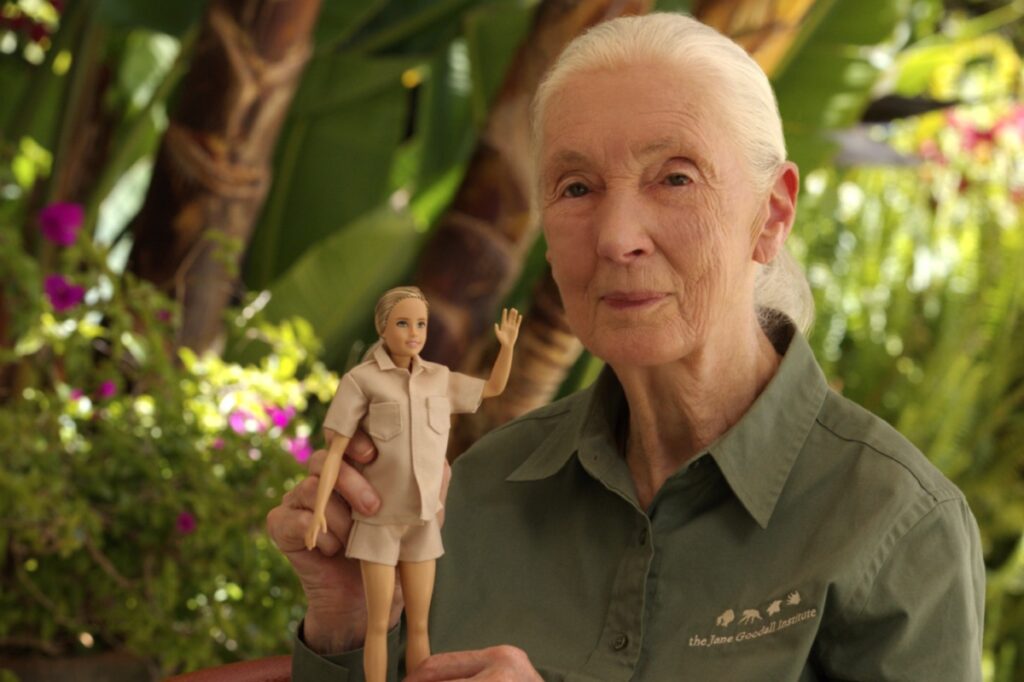
On Travelling There:
‘I was good at school, but we couldn’t afford for me to go to university. I did a boring, old secretarial course, and got a job in London. Then a schoolfriend wrote inviting me to Kenya where her parents had just bought a farm. I went home and waitressed to save up the money.
‘It took five months before I had enough for a return boat trip to Africa. I was very excited even though it took almost a month to get there.’
On Apartheid:
‘The first place I set foot in Africa was Cape Town. I loved it until I started reading signs on the backs of the seats and the doors in hotels and restaurants in Afrikaans saying ‘slegs blankes’. I had to ask what it meant: ‘white people only.’ I didn’t like Cape Town after that because I wasn’t brought up to judge people by the colour of their skin. So I couldn’t wait to leave.’
On Meeting Paleoanthropologist Louis Leakey (who demonstrated that humans evolved in Africa)
‘After a month someone said: “Jane, if you’re interested in animals, you should meet Dr Louis Leakey.” I called him and he invited me to the Natural History Museum where he was the curator. I think he was impressed by how much I had managed to learn about African animals because I’d spent hours in the Natural History Museum when I was working in London. And I mentioned that boring secretarial course. Well, guess what? His secretary had suddenly quit – he needed a secretary, and there I was.’
On Her Big Break:
‘One evening another girl and I wandered out onto the plains where all the animals were and we encountered a young male lion. He was fully grown with tufts of hair growing on his shoulders, and he was just standing, looking. I think he was curious – he’d never seen anything like us before. Gillian wanted to hide in the bottom of the gorge and I said no because then he’d know where we were but we wouldn’t have a clue where he was. I said we had to climb up, which is what we did.
‘It was that night, around the campfire, that Leakey decided I was the person he’d been looking for for years to go and study our closest relatives.’
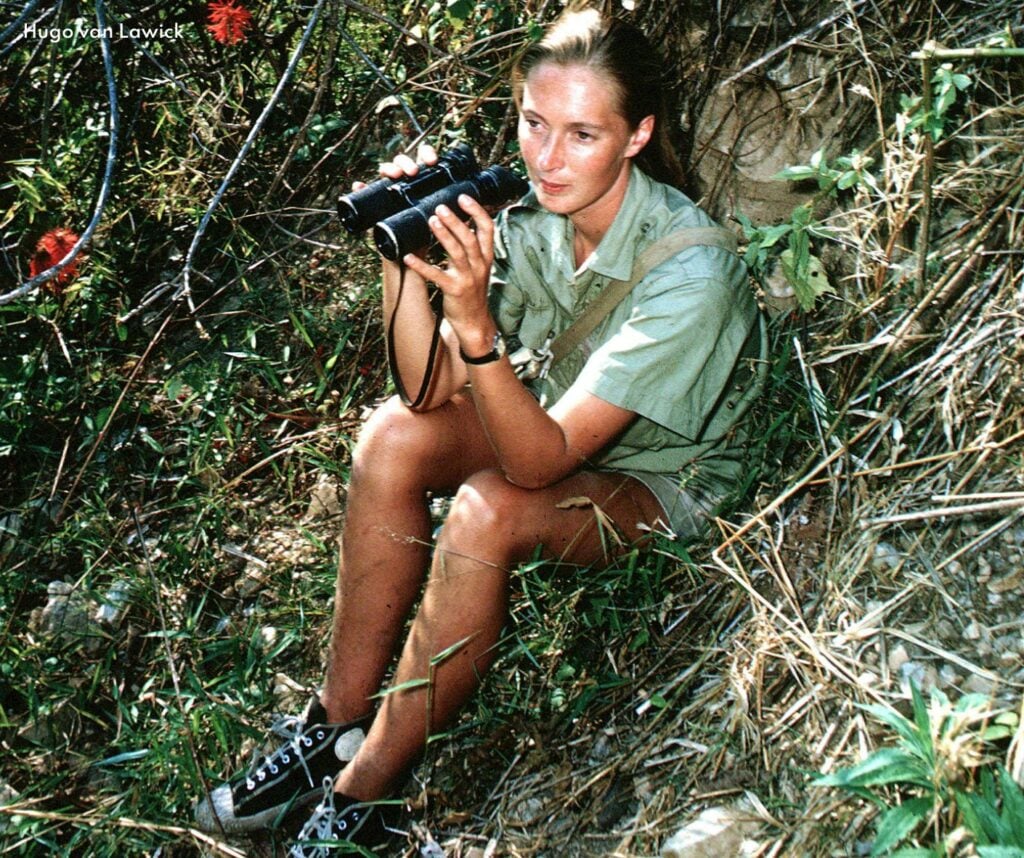
On Her First Chimpanzee Encounter:
‘For the first four months, the chimps took one look at me and disappeared into the forest. Weeks turned into months and I was getting worried. But then there was a breakthrough. They’re so like us with their postures and gestures of communication: kissing, embracing, holding hands, patting one another on the back, males competing for dominance, standing upright, swaggering with their hair bristling.
‘I learned about the behaviour of the mother and her growing family; how a female doesn’t have her first baby until she’s about 12 or 13, and then there’s a space of five years between live births. The older child doesn’t move away when the new baby is born but stays and helps the mother to look after the infant.’
On The Chimps’ Kindness and Violence:
‘I thought chimps were so like us but nicer but they have a dark and aggressive side, just like we do, and they’re capable of violence, brutality, killing, and a kind of primitive war.
‘But also, just like us, they have a loving, compassionate, and truly altruistic side, so that an adult male may adopt an orphan whose mother has died. There was this little infant, who was just three and a half, we thought he would die, there was nobody looking after him. And then, to our amazement, a 12-year-old male adopted him, carried him around, shared his food and his nest with him, and saved his life.’
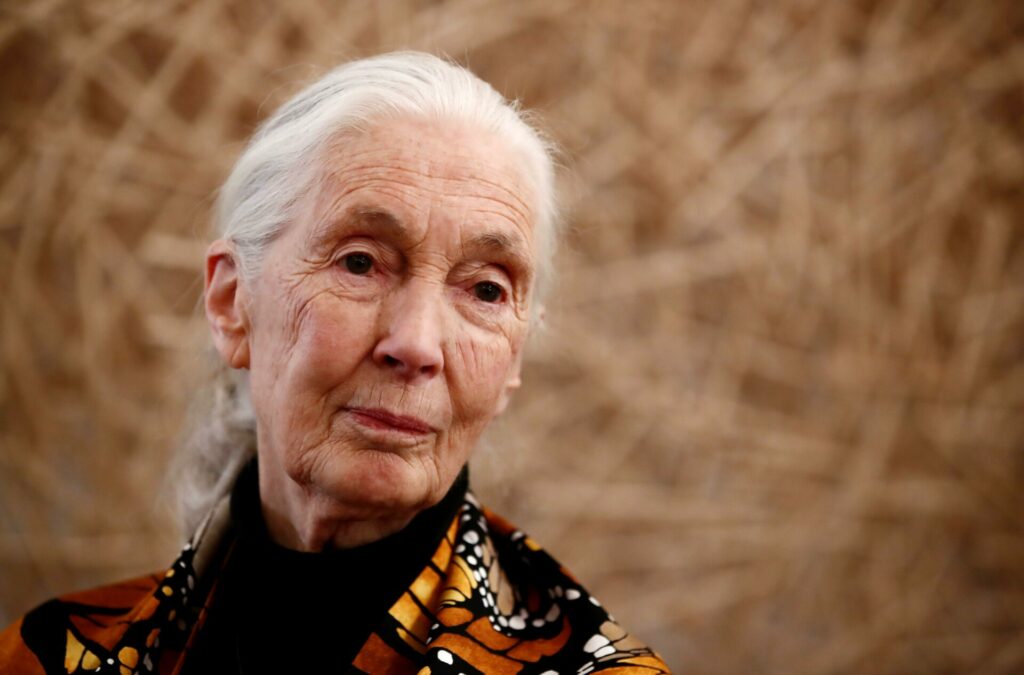
On Cambridge University:
‘Louis Leakey wanted the scientists to take me seriously, so he said: “You need a degree, and we don’t have time for an undergraduate degree, so I’ve got you a place in Cambridge University to do a PhD.”
‘I’d never even been to college. And imagine how I felt, when these erudite professors, who I was a bit nervous of, told me I’d done everything wrong: I shouldn’t have given the chimpanzees names, that wasn’t scientific, they should have numbers. You couldn’t talk about them having personalities, or minds, or emotions – those were unique to humans.
‘We discussed conditions in captivity and I couldn’t sleep for nights after seeing our closest relatives, social beings, in the cages 5ft by 5ft square, only 7ft high…I went to that conference as a scientist. I left four days later as an activist’
Dr. Jane Goodall
‘Fortunately, I had a wonderful teacher when I was a child and he taught me that these professors were totally wrong. That teacher? My dog, Rusty. If you’ve shared your life meaningfully with any kind of animal, whether it’s a dog, cat, horse, camel, goat, donkey, chicken, you know that they have personalities, you know that they can show a lot of intelligence, and you know that they have emotions, they can feel happy, sad, and afraid.
‘So I didn’t challenge the professors; I just went on quietly talking about the way chimpanzees are. Luckily The Geographic had sent a filmmaker as I got the chimps’ confidence, and he was documenting many of the things that I had found out. And when that film started to go around the world, the professors could see that what I was saying was true.’
On Conservation, Captivity and Deforestation
‘In 1986 – 35 years after I began the study of the chimpanzees – we had a conference for all the people studying chimps in different environments and we had a session on conservation. It was a shock. Chimpanzee numbers were dropping everywhere they were being studied, and forests were disappearing.
‘We discussed conditions in captivity and I couldn’t sleep for nights after seeing our closest relatives, social beings, in the cages 5ft by 5ft square, only 7ft high. There was nothing in them, just bars – bars at the side, bars below. If they were lucky, they got a tyre to sit on.
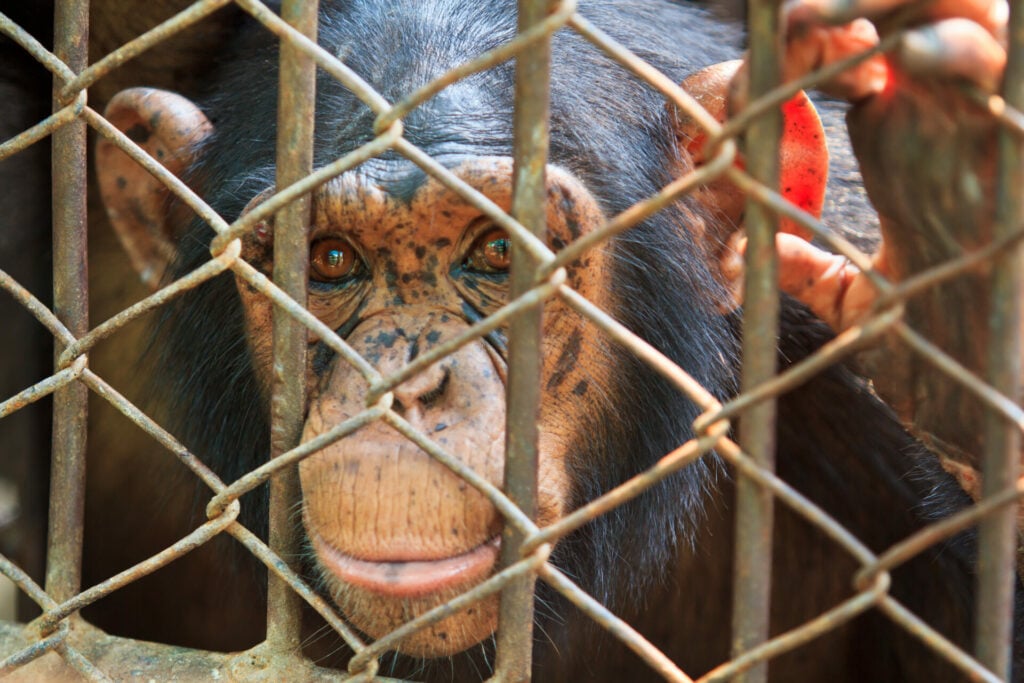
‘I went to that conference as a scientist. I left four days later as an activist. I knew I had to do something. It started a very, very long effort to get chimpanzees out of medical research, and about five years ago that came to fruition. I don’t think there are any chimps in medical research anywhere anymore.’
Chimpanzees’ Problems
‘I went out and learnt about the other problems faced by chimpanzees: the bushmeat trade killing chimpanzees for food, the problem of orphans being sold in the markets for pets, and the killing of mothers specifically to steal their babies to sell overseas.
‘That’s when it hit me: if we don’t help these people to find ways of making a living without destroying their environment, we can’t save chimpanzees, forests, or anything else’
Dr Jane Goodall
But I was also learning about the plight of so many African people living in and around chimpanzee habitat – the terrible poverty, the lack of good health and education systems, the degradation of the land, as their numbers grew, moving further and further into chimpanzee habitat.
‘And it all came to a head when I flew, in the late 1980s, over Gombe National Park. In 1960, Gombe was part of a great forest belt that stretched across Equatorial Africa. By the late 1980s, it was a tiny island of forest, surrounded by completely bare hills. There were more people living there than the land could support, cutting down the trees in their effort to grow more food to feed their growing families, or to make money from charcoal or timber. That’s when it hit me: if we don’t help these people to find ways of making a living without destroying their environment, we can’t save chimpanzees, forests, or anything else.
‘We began helping them to restore fertility to overused farmland – without chemicals – and …now the people have understood that protecting the environment isn’t just for wildlife, it’s for our future.’
On her Roots & Shoots Programme:
I was meeting young people who were losing hope. I asked why and they told me: “Well, you’ve harmed our future, and there’s nothing we can do about it.”
That’s when Roots & Shoots began, back in 1991, with 12 high school students from eight schools in Tanzania. We decided that the most important message is that every single one of us makes some kind of impact on this planet, every single day, and we get to choose what sort of impact we make. We decided that each group would choose what projects they would do to make the world better; one for people, one for animals and one for the environment. Today, Roots & Shoots is in 67 countries.
On Hope For The Future:
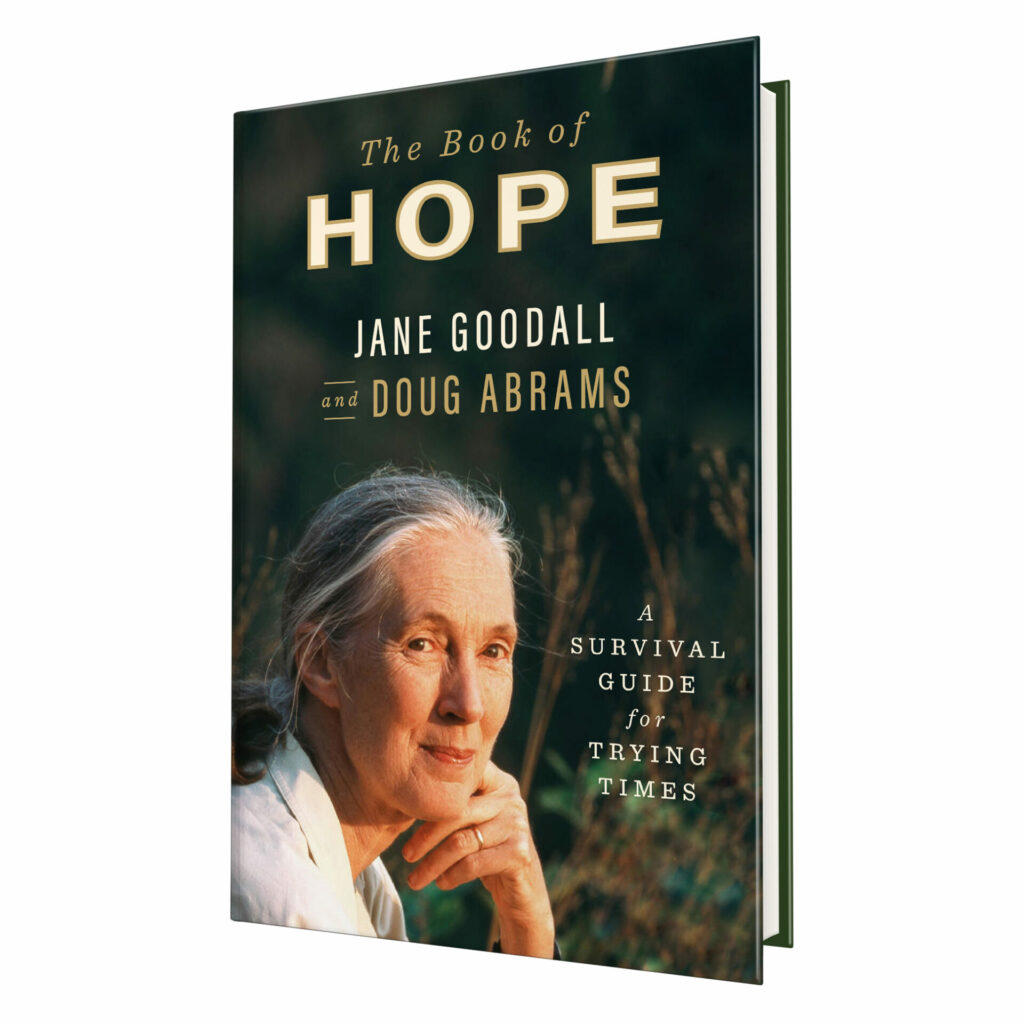
‘Hope is about action and learning to overcome obstacles: climate change, loss of biodiversity, agricultural industrial farming that’s poisoning the land and harming biodiversity, poverty, unsustainable lifestyles, all these and many more.
My other reason for hope is the resilience of nature. A place we’ve destroyed can, with time, allow nature back. If you fly over Gombe today, there are no more bare hills; the forests are coming back, and the animals and plants with them. Here, in the UAE, the Arabian oryx were totally extinct in the wild. Luckily there were some left in captivity and with captive breeding there are now beautiful Arabian oryx wandering around again in the desert.
You can purchase Dr. Jane Goodall’s Book of Hope here







